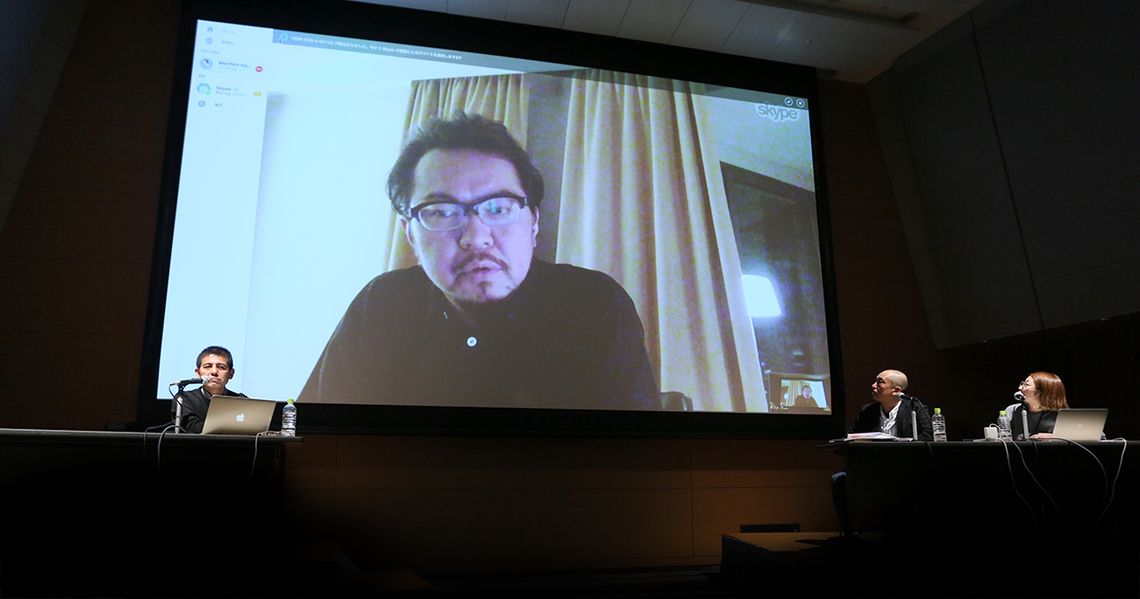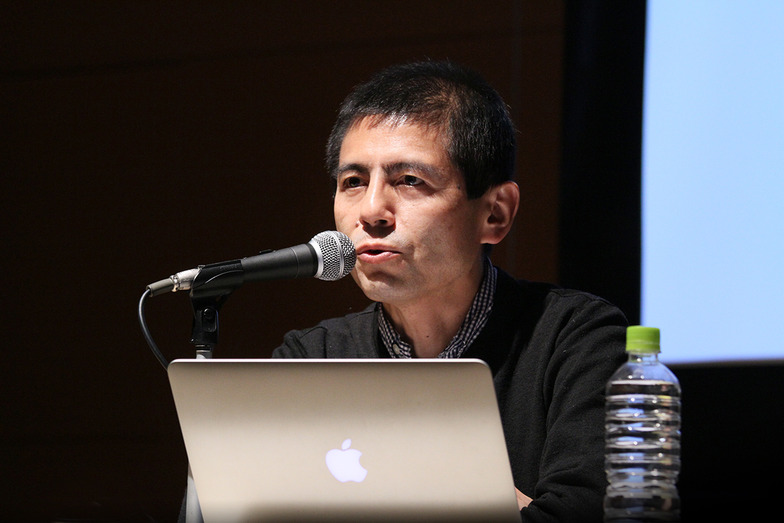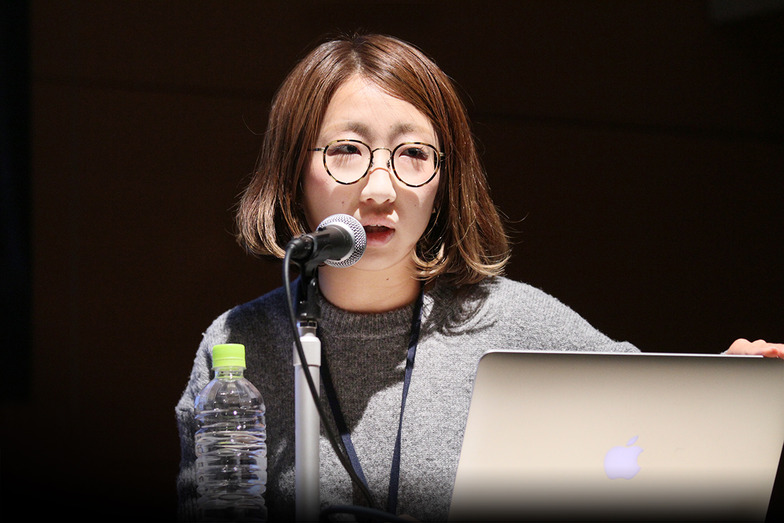This Dentsu Inc. Design Talk invites editor Masanobu Sugatsuke to provide an overview of the "present" surrounding photography. The talk session members are: Morihiro Harano, who founded "Mori" after working at Dentsu Inc., Drill Inc., and PARTY, and serves as a judge for global advertising awards; Kiyoshi Uematsu, Editor-in-Chief of the photography magazine "Commercial Photo"; and Yuri Uenishi, an Art Director at Dentsu Inc. with deep knowledge of photography, who won awards at Cannes, NYADC, D&AD, and One Show in 2016. Precisely because everyone takes photos today, we will critique photography from a professional perspective and discuss what it truly means to "see" a photograph.

(From left) Editor Masanobu Sugatsuke, Mori representative Morihiro Harano (participating via Skype), Commercial Photo Editor-in-Chief Kiyoshi Uematsu, Dentsu Inc.'s Yuri Uenishi
A return to film is happening
Sugatsuke: Photography in the 2010s has seen major changes in two areas due to the penetration of digital technology. The first is the "digitization of the tools used to capture images," and the second is the "digitization of the media used to display them."
The digitization of the tools used to capture images is best symbolized by the smartphone. Looking at the iPhone alone, statistics from just six months ago show approximately one billion units sold worldwide. Smartphones come equipped with cameras, meaning most people carry a camera with them constantly in their daily lives.
The media for viewing photos has also changed. Opportunities to share photos on our main device, the smartphone, have increased. In advertising, digital signage has become widespread. Even the famous Times Square in New York, once dominated by print ads, has now largely shifted to digital signage.
On the other hand, this digital proliferation has sparked a counter-movement: a "return to film," right?
Uematsu: Yes. When we surveyed professional photographers who read Commercial Photo about their interest in film photography, many in their 20s and 30s responded with "very interested," "want to try shooting on film," or "actually use film." While digital requests overwhelmingly dominate their work, we've definitely noticed more people showing interest in film recently.
Sugatsuke: Impossible, the company now producing Polaroid film, is doing well. Even the major UK fashion site BoF ran a feature article about fashion photography returning to film.
Uematsu: Until now, professional photographers' equipment was only accessible to professionals. But today, photos taken with an iPhone can be used in ads, and even amateurs can fly drones. Shooting with an SLR camera lets you check the results immediately on the monitor, and it automatically corrects camera shake, so there's no room for failure. In this environment, people are asking, "What is the professional's raison d'être? What is the professional's skill?"
Sugatsuke: Precisely in this climate, a new generation of photographers has emerged. When I interviewed Ryan McGinley, one of the most successful photographers of the past decade, he stated, "Technology doesn't create art. I have a strong vision that art is about moving people's hearts. For me, photography is a language for connecting well with the world."
Similarly, Yoshiyuki Okuyama, a leading figure among Japan's new generation of photographers, stated, "Film possesses something digital technology, no matter how advanced, can never catch up to." I sense a significant counter-reaction to digital in the words and actions of this generation.
Uenishi: I personally also feel a certain "discomfort" with digital. I sense a void or artificiality in the lack of tension at the moment the shutter clicks. About 80% of my recent work involves collaborating with film photographers. I'm drawn to their resolve to shoot only on film, and I'm also drawn to the things that can only be captured on film.
Harano: Hearing that, I thought maybe what's important now is "non-fiction authenticity." I do a lot of video work. For OK Go's music video "OK Go: I Won't Let You Down," we shot it in one continuous take. For Honda Motor Co.'s "Honda. Great Journey.," we manually moved handcrafted models for scenes that would normally use CG.
By doing this, you can make the photo or video convey that moment—that feeling of "People gathered somewhere in the world to create this." Precisely because the internet has proliferated and the volume of information has become overwhelming, I think the "value of the moment" and the "value of the production process" have increased.
Sugatsuke: I think the "non-fiction quality" Harano-san mentions is something common among the new generation of photographers. Perhaps they are trying to recapture that tension focused on the single moment.
Why is photography becoming more cerebral?
Sugatsuke: I believe the defining characteristic of photography in the 2010s is that "it has become more cerebral." Intellectual photography has always existed, and contemporary art photography is highly conceptual. But recently, even within commercial photography, fashion advertising in particular has become incredibly cerebral.
For example, the Dior fashion brand campaign photos shot by Ines & Vinoodh are an homage to Manet's famous painting "Luncheon on the Grass." There are also photos by other photographers based on Klimt's paintings, and photos recreating past masterpieces.
Why do recent fashion photos so often feature such obvious references? What do you think, Uenishi-san?
Uenishi: Well, I think it's quite close to the context of contemporary art. It's like a knowledge game; people who recognize the source material enjoy it. Since the fashion industry's clients are high-end brands and its customers are culturally sophisticated, I wonder if it forms a kind of community.
Sugatsuke: I agree. Fashion photography is conducting a kind of "intelligence test" through advertising. Even seemingly straightforward, beautiful photos featuring universally recognized beauties or celebrities have multiple layers beneath the surface—a structure only those in the know can decipher. That's how luxury fashion photography is done these days.
Last year's campaign for the popular luxury brand Marc Jacobs was shot by David Sims. The casting was designed for those in the know: featuring a model popular with teenage girls, Marilyn Manson, and even Japanese avant-garde musician Keiji Haino.
Furthermore, in Louis Vuitton's recent campaign, they employed three top photographers, each shooting different subjects, with the art director creating advertisements using various combinations. Perhaps influenced by this campaign, Calvin Klein also hired three young photographers. Their casting mixes famous and unknown figures, from young musicians to creators, creating a powerful sense of shared generation and era – sparking reactions like "Who's this?", "Oh, that person?", or "Isn't this photographer from the same generation?".
Uematsu: The goal is to generate buzz and embrace diversity, right? Fashion is also becoming more diverse, catering to men, women, and those in between. To resonate with more people, isn't it better to offer a wide range of tastes?
Sugatsuke: Exactly. Calvin Klein's PR team said, "To better reach younger generations, we wanted photographers of the same generation to shoot people of the same generation." The hashtag "#mycalvins" is the copy, and they're launching a major campaign hoping it will spread on Instagram and other social media.
*Continued in Part 2
You can also read the interview here on AdTie!
Planning & Production: Dentsu Live Inc. Creative Unit Creative Room 2, Aki Kanahara
















